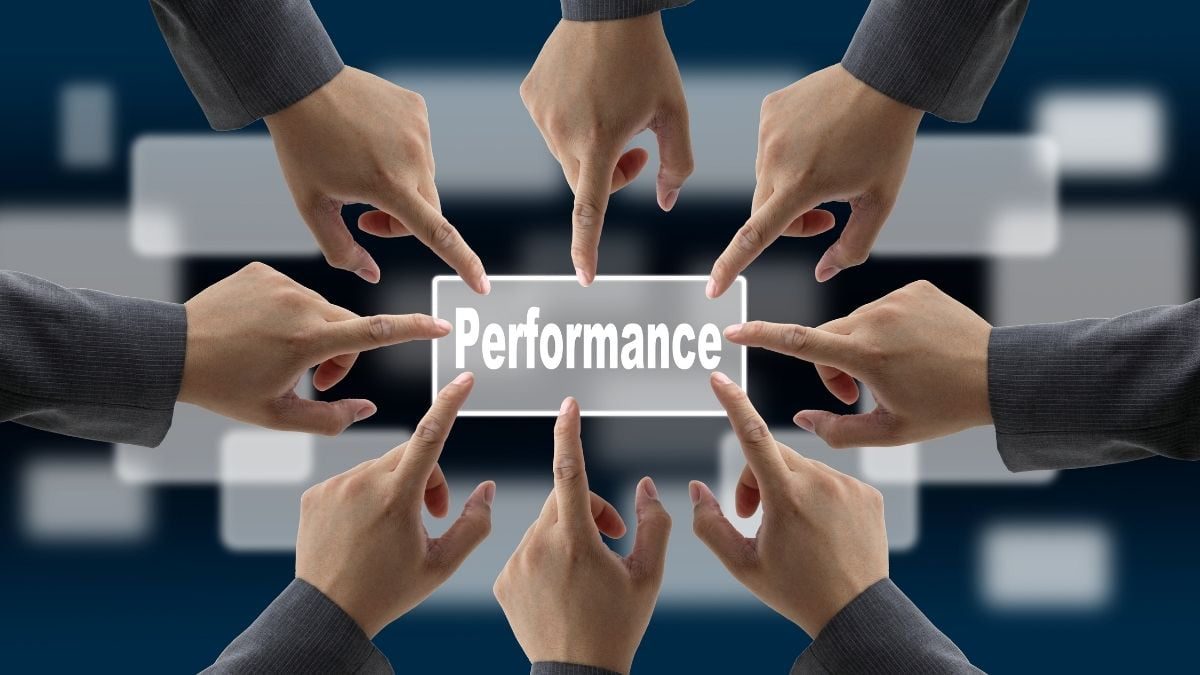Fostering a Sense of Purpose and Belonging
Helping team members understand the broader purpose and impact of their work can be a powerful motivator. By connecting individual and team efforts to the organization's mission and values, leaders can inspire team members to take pride in their work and feel a stronger sense of belonging to the team and the organization.
The Power of Teamwork: Unveiling the Keys to High Performance

Building a High-Performing Team: Essential Elements and Strategies

Embracing Diversity in Recruitment and Selection
Actively seeking out and attracting candidates with diverse backgrounds, skills, and experiences can significantly enhance the overall talent pool and team capabilities. By implementing inclusive hiring practices, organizations can build teams that are better equipped to tackle complex challenges and uncover innovative solutions.
Effective measurement and assessment of team performance are crucial for identifying areas of strength, pinpointing areas for improvement, and implementing targeted strategies to enhance overall team effectiveness. By leveraging a range of metrics and tools, organizations can gain valuable insights and make data-driven decisions to optimize team performance.
Facilitating Productive Meetings and Discussions
Well-structured and productive meetings are crucial for effective team collaboration. Leaders should ensure that meetings have clear agendas, defined objectives, and opportunities for active participation, allowing team members to contribute their ideas, raise concerns, and collectively problem-solve.
Remote and Hybrid Work Arrangements
The widespread adoption of remote and hybrid work models has profoundly impacted team dynamics and performance. Organizations must adapt by implementing effective communication, collaboration, and engagement strategies to support distributed teams and maintain high levels of productivity and cohesion.
Crafting a high-performing team requires a strategic and intentional approach, addressing key elements that contribute to team success. From establishing a clear vision and defining roles to fostering a supportive environment and promoting continuous learning, organizations can implement various strategies to build and maintain a thriving team.
Adapting Leadership Styles to Suit Team Dynamics
Effective leaders are adaptable, adjusting their leadership styles to suit the unique dynamics and needs of their team. They are able to balance directive and participative approaches, provide the right level of structure and autonomy, and respond to the evolving needs of the team over time.
Promoting Equitable Career Development Opportunities
Ensuring that all team members have equal access to professional development, mentorship, and growth opportunities is crucial for cultivating an inclusive and high-performing team. By providing these resources and support, organizations can help team members reach their full potential and contribute to the team's overall success.
Measuring and Assessing Team Performance: Metrics and Tools

Leveraging Technology to Enhance Collaboration
Advancements in technology have revolutionized the way teams collaborate, offering a range of tools and platforms to facilitate seamless coordination, real-time information sharing, and virtual teamwork. Leveraging these technologies can help teams overcome geographical barriers, improve document management, and enable efficient remote collaboration.
Conclusion
Boosting team performance is a multifaceted endeavor that requires a strategic and holistic approach. By understanding the key drivers of high-performing teams, implementing effective strategies, and continuously adapting to emerging trends, organizations can unlock the full potential of their most valuable asset - their people. By fostering a culture of teamwork, communication, engagement, and continuous improvement, organizations can position themselves for long-term success in the ever-evolving business landscape.
Empowering and Enabling Team Members
High-performing teams thrive when their leaders empower and enable team members to take ownership of their work, make decisions, and contribute their ideas. By fostering a sense of autonomy and trust, leaders can unlock the full potential of their team, encouraging innovation, risk-taking, and a collective sense of responsibility.
Motivation and Engagement: Keeping Teams Inspired and Productive
Maintaining high levels of motivation and engagement is a crucial aspect of driving team performance. By cultivating an environment that fosters intrinsic motivation, recognition, and a sense of purpose, organizations can unlock the full potential of their teams, ensuring sustained productivity, innovation, and job satisfaction.
Future of Team Performance: Emerging Trends and Innovations
As the business landscape continues to evolve, the future of team performance will be shaped by emerging trends and innovative approaches. By staying attuned to these developments, organizations can adapt their strategies and leverage cutting-edge tools and methodologies to drive sustainable team excellence.
Encouraging Cross-Functional Collaboration
Breaking down silos and encouraging cross-functional collaboration can significantly boost team performance. By facilitating interactions between team members with diverse expertise and perspectives, organizations can foster innovative solutions, leverage complementary skills, and enhance overall team effectiveness.
Leadership and Team Performance: The Role of Effective Leadership
Effective leadership is a crucial component in fostering high-performing teams. Leaders play a pivotal role in setting the tone, shaping the team's culture, and empowering team members to achieve their full potential. By embracing a leadership style that combines vision, empowerment, and support, organizations can unlock the true potential of their teams.
Team Effectiveness Assessments
Utilizing team effectiveness assessments, such as surveys or diagnostic tools, can provide valuable insights into the overall health and functioning of the team. These assessments can evaluate factors like communication, collaboration, decision-making, and problem-solving, helping teams identify areas for improvement and develop targeted strategies to enhance their performance.
Encouraging Cross-Cultural Collaboration and Understanding
Facilitating cross-cultural collaboration and understanding within the team can help break down silos, foster mutual respect, and enable team members to leverage each other's unique strengths. This may involve organizing cultural awareness events, facilitating team-building activities, and encouraging regular feedback and open dialogues.
The Importance of Mutual Accountability
High-performing teams thrive on a culture of mutual accountability, where each team member takes responsibility for their own contributions and holds others accountable as well. This creates a sense of ownership, commitment, and shared responsibility, leading to better decision-making, higher quality work, and increased accountability.
Fostering an Inclusive Work Environment
Creating an inclusive work environment where all team members feel valued, respected, and empowered to contribute is essential for harnessing the benefits of diversity. This may involve providing diversity and inclusion training, promoting open communication, and ensuring that decision-making processes are transparent and equitable.
Employee Well-being and Mental Health Support
As the importance of employee well-being and mental health becomes more recognized, organizations will need to prioritize initiatives that support team members' holistic well-being, fostering a sustainable and high-performing work environment.
In the dynamic and fast-paced business world, the ability of teams to perform at their best is crucial for organizational success. Effective teamwork not only drives innovation, productivity, and problem-solving but also fosters a positive and collaborative work environment. This blog post explores the various strategies and best practices for boosting team performance, helping organizations unlock the full potential of their most valuable asset - their people.
Providing Meaningful Recognition and Rewards
Recognizing and rewarding team members' contributions is a powerful way to boost motivation and engagement. This can take the form of formal recognition programs, public acknowledgments, or opportunities for professional development and career advancement. By celebrating team successes and individual achievements, organizations can foster a sense of pride and ownership among team members.
Fostering a Balanced and Supportive Work Environment
Maintaining a healthy work-life balance and providing support for team members' well-being are crucial for sustaining motivation and engagement. This can involve implementing flexible work arrangements, offering wellness programs, and promoting a culture of self-care and work-life integration.
Promoting Active Listening and Feedback
Effective communication is not just about sharing information; it also involves active listening and providing constructive feedback. By encouraging team members to actively listen to one another, share their perspectives, and offer constructive feedback, organizations can foster a culture of mutual understanding, respect, and continuous improvement.
Artificial Intelligence and Automation
The integration of Artificial Intelligence (AI) and automation technologies into team workflows can significantly enhance performance by streamlining processes, improving decision-making, and freeing up team members to focus on more strategic and creative tasks.
Aligning Individual and Team Goals
Ensuring that individual and team goals are aligned is a powerful driver of motivation and engagement. When team members can see how their personal objectives contribute to the overall success of the team and the organization, they are more likely to be invested in their work and committed to achieving shared outcomes.
Addressing Conflicts and Disagreements
When conflicts or disagreements arise within the team, it is crucial to address them proactively and constructively. This may involve facilitating open dialogues, encouraging active listening, and guiding team members to find mutually acceptable solutions. By addressing conflicts head-on, organizations can prevent them from escalating and undermining team performance.
Encouraging Respectful and Inclusive Team Dynamics
Promoting a culture of respect, inclusivity, and appreciation for diverse perspectives is essential for maintaining a collaborative and high-performing team. By addressing biases, valuing individual differences, and ensuring that all team members feel heard and respected, organizations can create an environment that enables team members to thrive and contribute their best.
Establishing a Clear Vision and Strategy
Effective leaders have a clear and compelling vision for the team's success, and they are adept at communicating this vision to team members. By aligning the team around a shared purpose and strategic objectives, leaders create a sense of direction and motivation, inspiring team members to work towards a common goal.
Establishing Clear Communication Channels
Ensuring that team members have access to clear and efficient communication channels is essential for team performance. This may involve implementing a mix of communication tools, such as video conferencing, team messaging platforms, and project management software, to facilitate information exchange, coordinate tasks, and keep everyone informed.
See more: 789bet life
The Importance of Goal Alignment
Aligning team members around clear, shared goals is the first step towards high performance. When everyone is working towards a common objective, they are more likely to be motivated, engaged, and focused on achieving success. Effective goal setting ensures that team members understand their roles, responsibilities, and the expected outcomes, creating a sense of purpose and direction.
Qualitative Feedback and Observation
In addition to quantitative metrics, qualitative feedback and observation can offer valuable insights into team performance. Gathering feedback through interviews, focus groups, or team retrospectives can help understand the team's experiences, challenges, and areas of success. Furthermore, observing team dynamics and behaviors during meetings or collaborative sessions can provide valuable context and inform future improvement efforts.





